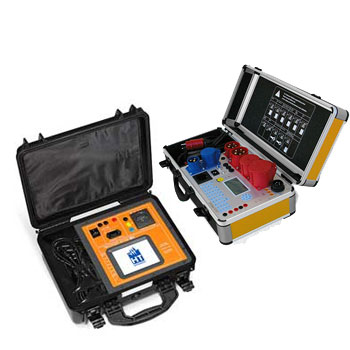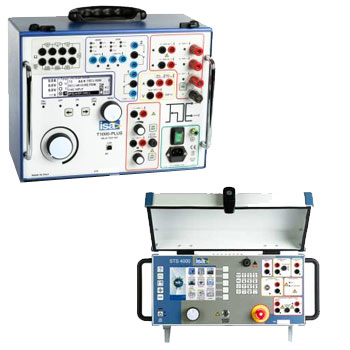
Airflow Instruments & Sensors – air velocity, volume flow & differential pressure
Airflow instruments/sensors for air and technical gases measure velocity (m/s), volume flow (m³/h, l/s) and differential pressure (Pa) in HVAC systems, fume hoods, cleanrooms, process air and energy monitoring. Options include thermal anemometers (hot-film/wire), vane anemometers, Prandtl/averaging Pitot, ultrasonic and flow pickup elements with built-in flow computation.
Outputs & interfaces: 4–20 mA, 0–10 V, pulse/Hz (K-factor), Modbus RTU, BACnet, IO-Link, some with Ethernet. Options: T/RH compensation, alarms, display/logger, ATEX, and calibration certificates.
ICS Schneider Messtechnik supports sensor selection, mounting location, data evaluation, calibration and integration with BMS/SCADA/IIoT.
FAQ on Airflow Instruments & Sensors
Answers on measurement principles, selection, installation, compensation, calibration, standards and best practices.
Which measurement principle fits my application?
| Principle | Strengths | Notes |
|---|---|---|
| Thermal (hot-film/wire) | Very sensitive at low m/s, compact | Sensitive to dust/oil; needs temperature compensation |
| Vane anemometer | Rugged, direct velocity readout | Limited at very low speeds; alignment critical |
| Prandtl / averaging Pitot | Simple, wide range, high temps | Requires straight runs; density/temperature correction |
| Ultrasonic | No intrusions, low pressure loss | Benefits from straight runs and stable flow profile |
How do I convert velocity to volume flow?
Volume flow Q = vavg · A. Determine vavg via traverse (multi-point) or an averaging probe; A is the duct/pipe cross-section.
When is a traverse measurement recommended?
When the profile is not fully developed, downstream of fittings/obstacles or in large ducts. Multi-point grids significantly improve accuracy.
What straight-run requirements should I follow?
Rules of thumb: ≥10·D upstream and ≥5·D downstream of the measurement plane (D = hydraulic diameter). Flow straighteners/honeycombs help.
How do I compensate for temperature, pressure and humidity?
For standard volume flow, account for ρ, T, p. Mass flow: ṁ = ρ · Q. Thermal sensors especially benefit from proper T/RH compensation.
What accuracy is realistic?
Thermal/vane typically ±(1…3 % of rdg + 0.02…0.1 m/s), Pitot depends on Δp accuracy/ρ, ultrasonic around ±1…2 % of rdg (installation/profile dependent).
How should I size the measuring range?
HVAC: 0.2…10 m/s; process/exhaust up to 20 m/s+. Aim for the typical operating point in the middle third of the range.
Which factors increase uncertainty?
Flow profile quality, vibration, contamination, temperature swings, pressure fluctuations, wrong orientation, and duct leakage.
How do I install sensors correctly?
- Place the sensor centrally or per manufacturer’s recommended profile position.
- Ensure airtight mounting; provide strain relief for cables.
- Align the sensing axis parallel to the flow direction.
Do I need a differential pressure transmitter for Pitot tubes?
Yes. Convert Δp to velocity via v = C · √(2·Δp/ρ) (C: calibration factor). For Q add A and, if needed, a profile factor/field calibration.
How often should I calibrate?
Common guideline: annually; shorter intervals for critical measurements or dusty environments. Calibrate in a wind tunnel or with a traceable Δp chain.
How do I handle dust, oil and condensation?
Use filters/guards, schedule maintenance, gently clean thermal probes (do not rub the sensing film), and provide condensate drainage.
How to get stable readings at very low speeds?
Use miniature thermal probes, increase averaging time, add flow straighteners, compensate temperature drift, and minimize electrical (EMC) noise.
Which signal outputs make sense?
0–10 V for short runs, 4–20 mA for EMC/distance; pulse/Hz for totalizers; Modbus/BACnet/IO-Link when multiple quantities (v, T, RH, Q) and diagnostics are needed.
How do I correct to standard conditions?
Convert volume flow to the chosen standard state (e.g., 1013.25 hPa/0 °C or 20 °C per spec) using an equation-of-state based density correction; include humidity if relevant.
Any particular requirements for cleanrooms/labs?
Smooth, cleanable surfaces, low pressure drop, fast response, and optionally data capture compliant with GAMP/21 CFR 11.
Which standards/guidelines apply?
For HVAC performance testing see EN 12599; for DP primary elements refer to ISO 5167. Always observe manufacturer straight-run recommendations.
How do I verify installed performance?
Perform a field traverse against a traceable handheld, compare computed Q to system setpoints, and document deviations with uncertainty.
What about explosion-hazard or high-temperature areas?
Select ATEX/IECEx certified probes/transmitters with the right protection concept; for hot ducts use materials and sensor heads rated for the temperature class.
Do you assist with design & commissioning?
Yes—we match the measurement principle/range, recommend installation/traverses, supply calibration certificates and integrate sensors with BMS/SCADA/IIoT.













































































































































































